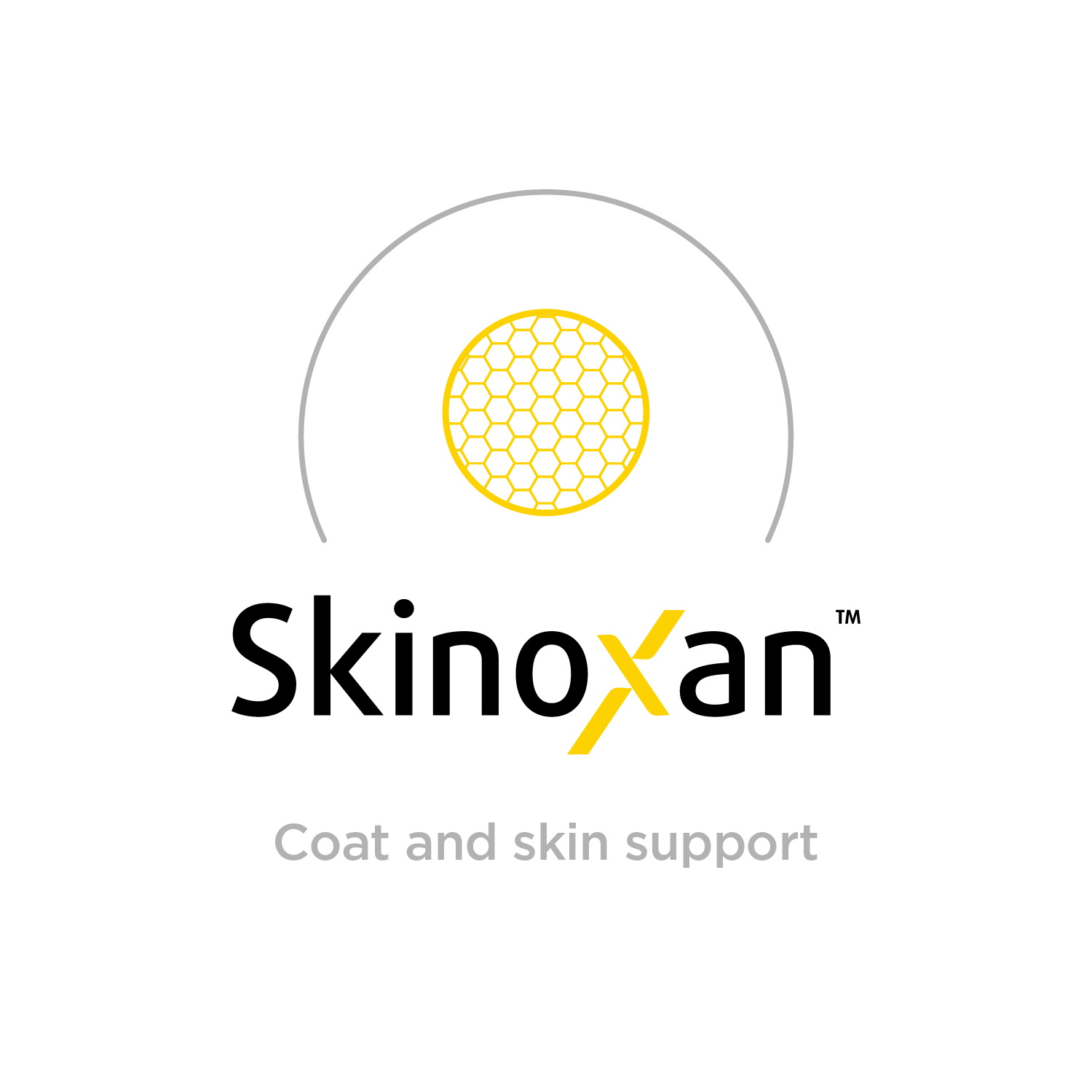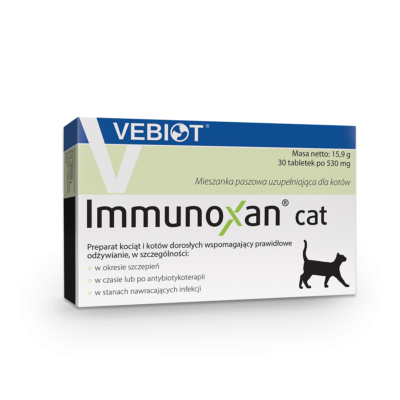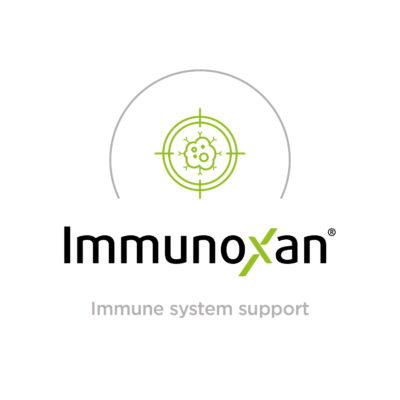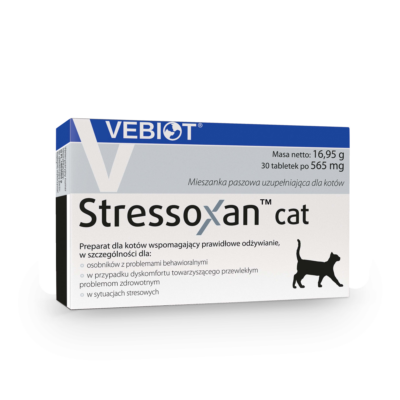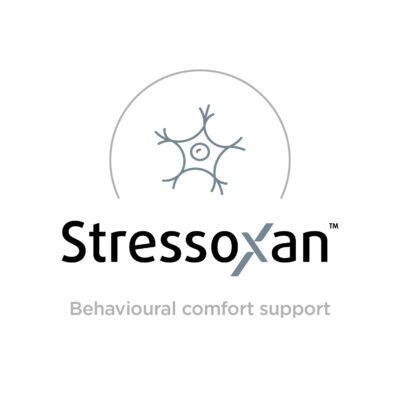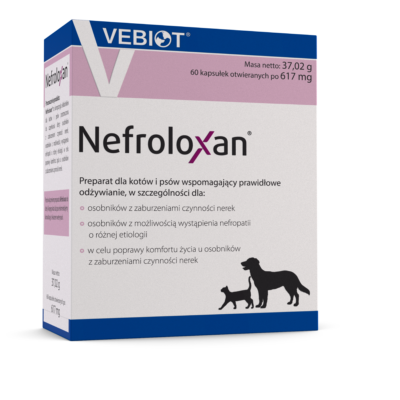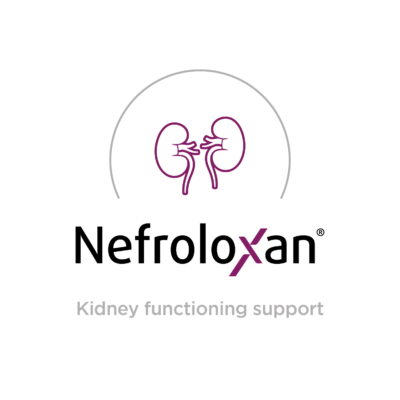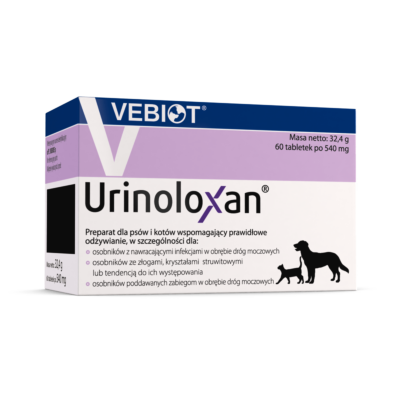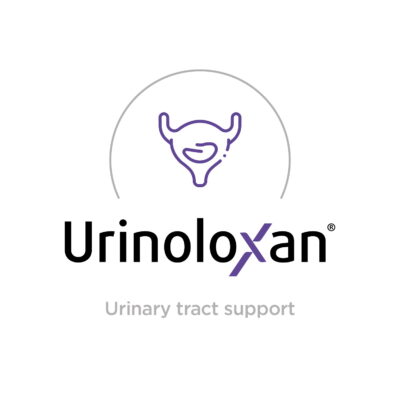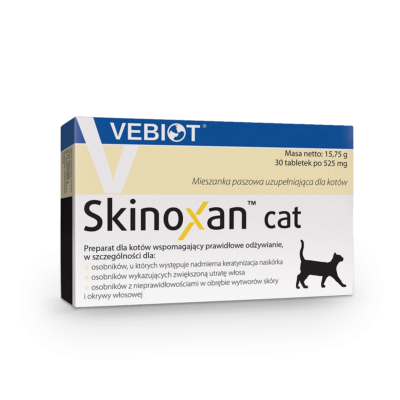Details
Composition of Skinoxan cat
The ingredients in Skinoxan cat support adult cats and kittens with skin problems. They help to take good care of the fur and skin, improving their condition.
Zinc is a mineral that, as a component of metalloenzymes and a cofactor of RNA and DNA polymerases, is involved in cell cycle regulation. The provision of an adequate supply of zinc contributes to maintaining proper skin condition.
Vitamin B1 (thiamine) participates in the processes of skin regeneration.
Vitamin B2 (riboflavin) helps to maintain healthy skin and takes part in processes connected with collagen biosynthesis.
Vitamin B3 (niacin) helps to maintain proper condition of mucous membranes.
Vitamin B5 (pantothenic acid) contributing in synthesis of phospholipids, which are components of cell membranes.
Vitamin B6 (pyridoxine) contributing in the transformation of collagen.
Vitamin B7 (biotin) helps to maintain proper hair coat.
Vitamin B9 (folic acid) contributing in the process of cell division.
Vitamin B12 (cobalamin) stimulates the synthesis of melanin in the skin of cats.
Vitamin A is responsible for proper keratinisation processes.
Vitamin E, as a natural antioxidant, is involved in maintaining the stability and integrity of the skin cell membrane.
How to keep your cat’s skin in good condition?
Cats spend a large part of their lives licking their fur. That way, they not only maintain hygiene but also stimulate blood circulation with their rough tongue and relieve tension. The outer hair and underfur protect your cat from heat and cold. Taking care of your cat’s fur and skin is extremely important and it should be supported by the owner.
The basic procedure is brushing the fur. The frequency and tools used should be adjusted to the cat’s hair type. For a short fur, a soft brush or comb is sufficient. If your cat has a thick underfur, a furminator may help. It is sufficient to groom your cat once a week. Cats with long and semi-long hair need more frequent grooming – several times a week or even daily. In addition to the above-mentioned grooming tools, a wide-toothed comb or a felt-tip comb is useful for removing tangles. Furthermore, long-haired cats can be bathed. This is not necessary for short-haired cats, as long as the bath is not part of a treatment.
Proper nutrition for your cat
A very important part of caring for your cat’s skin and hair is maintaining its proper diet. One aspect that influences the appearance of the fur is the presence of highly bioavailable forms of trace elements and vitamins in the diet. These compounds are coenzymes (essential components of enzymes) involved in epidermal cell division processes. When a cat’s hair falls out excessively, a deficiency in these components may be the cause.
What should cats with skin problems eat?
Another aspect are the skin changes, that often occur as a consequence of an ongoing disease process, such as ‘bald patches on the skin’, dandruff, flaking of the skin, or change of skin colour. The disease process may take place inside or on the surface of the skin (e.g. demodicosis, flea infestation) or may be indirectly connected with the skin – lesions are only symptomatic (e.g. bald spots or change of skin colour in the case of hormonal disorders). The skin is also the place where the so-called ‘allergic lesions’ appear, i.e. itchy places, often with hives or other skin lesions. Alternative nomenclature for skin diseases is dermatoses.
Products containing highly available forms of minerals should be used in the case of mineral and vitamin deficiencies, as well as during the occurrence of a skin disease. For example, it is scientifically proven that zinc has a positive effect on wound healing among cats. Therefore, in the case of skin problems, choose products containing zinc in a highly bioavailable form – in the form of a chelate. A product that works on the skin should contain zinc, vitamin A, vitamin E and a set of vitamins from the B group and a high content of biotin. Such a complementary feed is Skinoxan cat.

